Fuji X-E1 review
Today attention for the FujiFilm X-E1 or as I call it the Sexy-1.
It’s no secret that I absolutly love the FujiFilm cameras. It all started when was handed an FujiFilm X100 during a Photowalk and although at that time I did not like the focus etc. (was solved later) I fell in love with the fact that it felt like a real camera…. now what do I mean with a “real camera”.
In most smaller cameras you are getting a camera that feels like a digital brick that can take photos, but the whole feel of a camera is gone. Want to change the exposure compensation? go into the menu, want to change the zoom? press a few buttons and it zooms, want to change ISO? go into the menus, want to change … etc.
In other words I love a camera that has a more real camera feel and the FujiFilm cameras have this.
For example the Exposure compensation is right on top of the camera (where it should be), setting the aperture is on the lens itself, zooming (even on the X10) is done on the lens and not via a weird feeling button system, also shutterspeed etc. is all set on top of the camera and if you want everything to be auto… no problem set both on A and you’re in auto mode. So now that this is out of the way, let’s look at the “sexy-1”.
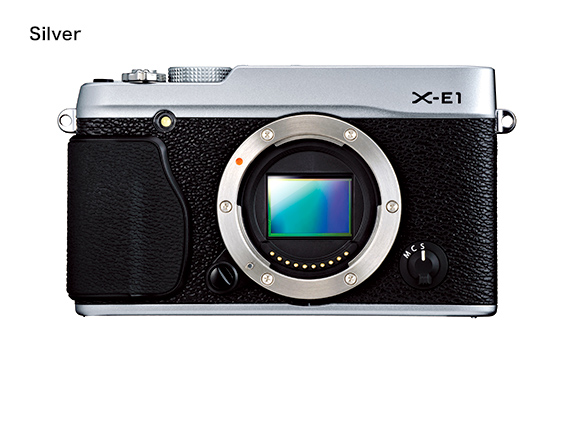 Let’s first take a look at the boring part… the specs.
Let’s first take a look at the boring part… the specs.
| Model Name | FUJIFILM X-E1 |
|---|---|
| Number of effective pixels | 16.3 million pixels |
| Image sensor | 23.6 mm x 15.6 mm (APS-C) X-Trans CMOS with primary color filter
|
| Storage media | SD memory card / SDHC memory card / SDXC (UHS-I) memory card*1 |
| File format |
|
| Number of recorded pixels | L : (3:2) 4896 x 3264 / (16:9) 4896 x 2760 / (1:1) 3264 x 3264 M : (3:2) 3456 x 2304 / (16:9) 3456 x 1944 / (1:1) 2304 x 2304 S : (3:2) 2496 x 1664 / (16:9) 2496 x 1408 / (1:1) 1664 x 1664<Motion Panorama> L Vertical: 7680 x 2160 Horizontal: 7680 x 1440 M Vertical: 5120 x 2160 Horizontal: 5120 x 1440 |
| Lens mount | FUJIFILM X mount |
| Sensitivity | Equivalent to ISO 200 – 6400 (Standard Output Sensitivity) AUTO mode: AUTO (400) / AUTO (800) / AUTO (1600) / AUTO (3200) / AUTO(6400) Extended output sensitivity equivalent ISO 100, 12800 and 25600 |
| Exposure control | TTL 256-zones metering, Multi / Spot / Average |
| Exposure mode | Programmed AE, Shutter priority AE, Aperture priority AE, Manual exposure |
| Exposure compensation | -2.0 EV – +2.0 EV, increment with 1/3 EV step |
| Image Stabilizer | Lens shift type (when OIS type lens is set) |
| Shutter control | Focal Plane Shutter |
| Shutter speed (with mechanical shutter) |
(P mode) 1/4 sec. to 1/4000 sec., (All other modes) 30 sec. to 1/4000 sec. Bulb (max. 60 min.) Time 1/2 to 30 sec. Synchronized Shutter speed for flash : 1/180 sec or slower * 1/180 sec can be automatically set at some shooting condition on P mode or A mode. |
| Continuous shooting | Max 6 / 3 fps selectable |
| Auto bracketing | AE Bracketing (±1/3 EV, ±2/3 EV, ±1 EV) Film Simulation Bracketing (Any 3 type of film simulation selectable) Dynamic Range Bracketing (100%, 200%, 400%) ISO sensitivity Bracketing (±1/3 EV, ±2/3 EV, ±1 EV) |
| Focus |
|
| White balance | Automatic scene recognition Custom, Color temperature selection (K) Preset: Fine, Shade, Fluorescent light (Daylight), Fluorescent light (Warm White), Fluorescent light (Cool White), Incandescent light, underwater |
| Film Simulation mode | 10 type (PROVIA/STANDARD, Velvia/VIVID, ASTIA/SOFT, PRO Neg Hi, PRO Neg Std, MONOCHROME, MONOCHROME+Ye FILTER, MONOCHROME+R FILTER, MONOCHROME+G FILTER, SEPIA) |
| Dynamic range setting | AUTO (100-400%), 100%, 200%, 400% |
| Self-timer | Approx. 10 sec. / 2 sec. Delay |
| Flash | Manual pop-up flash (Auto flash) Guide number: approx 7 (ISO200 · m) |
| Flash modes | Red-eye removal OFF: Auto, Forced Flash, Suppressed Flash, Slow Synchro. Rear-curtain Synchro, Commander Red-eye removal ON: Red-eye Reduction Auto, Red-eye Reduction & Forced Flash, Suppressed Flash, Red-eye Reduction & Slow Synchro. Red-eye Reduction & Rear-curtain Synchro, Commander |
| Hot shoe | Yes (dedicated TTL Flash compatible) |
| Viewfinder |
|
| LCD monitor | 2.8-in, approx. 460,000-dot, TFT color LCD monitor (Approx. 100% coverage) |
| Movie recording | 1920 x 1080 pixels, 1280 x 720 pixels (24 frames/sec.) with stereo sound Individual movies cannot exceed 29 minutes in length. |
| Photography functions | Select custom setting, Motion panorama, Color space, Color (Saturation), sharpness, Dynamic range, Film simulation, Gradation, Auto red-eye removal (by face detection function), Framing guideline, Frame No. memory, Histogram display, Preview depth of focus, Focus check, Electronic level, Multiple exposure, Fn button setting (RAW, Movie, etc) |
| Playback functions | RAW conversion, Image rotate, Red-eye reduction, Photobook assist, Erase selected frames, image search, Multi-frame playback (with micro thumbnail), Slide show, Mark for upload, Protect, Crop, Resize, Panorama, Favorites |
| Other functions | PictBridge, Exif Print, Language selection, Time difference, Quick start mode, Silent mode |
| Terminal |
|
| Power supply | NP-W126 Li-ion battery (included) |
| Dimensions | 129 (W) mm x 74.9(H) mm x 38.3(D) mm / 5.1 in.(W) x 2.9 in. (H) x 1.5 in. (D) (Minimum depth: 30.9 mm/ 1.2 in.) |
| Weight | Approx. 350g / 12.3 oz. (including battery and memory card) Approx. 300 g / 10.6 oz. (excluding accessories, battery and memory card) |
| Operating Temperature | 0°C – 40°C |
| Operating Humidity | 10 – 80% (no condensation) |
| Guide to the number of available frames for battery operation | approx 350 frames (When XF35mmF1.4 R is set) |
| Starting up period | Approx 0.5 sec, when QUICK START mode set to ON Approx 1.0 sec, when QUICK START mode set to OFF
|
| Accessories included | Li-ion battery NP-W126 Battery charger BC-W126 Shoulder strap USB cable Body cap Metal strap clip Protective cover Clip attaching tool CD-ROM (Viewer software, RAW File Converter etc.*3) Owner’s manual |
| Optional accessories | Li-ion battery NP-W126 Battery charger BC-W126 Shoe Mount Flash EF-20, EF-42, EF-X20 M Mount adapter Protector Filter PRF-58 58mmø Protector Filter PRF-52 52mmø Protector Filter PRF-39 39mmø Remote release RR-80 Hand Grip HG-XE1 Leather Case BLC-XE1 |
Ok now that we have all the boring stuff out of the way let’s talk about the performance because specs are always good on paper.
Handling the camera
Many people I talk to that use the FujiFilm cameras all say the same thing that I say, working with the FujiFilm cameras bring back the fun to photography with a smaller camera. And this is mainly due to the things I already wrote down at the start of the review, HOWEVER you can have everything in the right places but if the camera is slow or doesn’t focus or has the wrong image quality you are not really bringing back the fun you are actually destroying the fun.
Now let’s make one thing clear.
This is not really a point and shoot camera, just like the FujiFilm X-Pro1 (which I also use) it’s a professional piece of gear and it should also be handled like that, in other words you can of course pick it up and start shooting with it, but I think you will be disappointed with it, however if you take some time to learn how everything works the story changes, and I have to add to this that my wife picked up the X-E1 when it just arrived and immediately took some shots with it, but she also shot with the X10 and the Canon of course, so it’s not something hard to learn, but if you come from let’s say a 399.00 point and shoot camera where everything is in the menus and you only used the simple cartoon images to set the scenes well…. you will be a bit more pushed to get good images out of the FujiFilm cameras (as with any other pro camera by the way).

Long exposures with the X-E1 can be done from a normal tripod because the camera is really lightweight.
Lenses
When the X100 was released I really thought about buying one but in the end I did not for the simple reason that I did not like the fixed lens, with the X-Pro1 this all changed and the X-E1 uses the same mount so you can rest assure, the same lenses work (and with the new M mount adaptor also some of your old lenses you maybe have). The combination I tested in New York was the X-E1 with the brand new 18-55mm F2.8-F4 zoom lens. I also own the 18, 60 and 35mm lenses.
I can be very brief about this combination.
I LOVE IT.
I loved the X-pro1 a lot to shoot with but somehow I’m not a prime shooter, and don’t get me wrong I love primes, but not for streetphotography (and this is where I use the FujiFilm cameras the most) I love to be able to zoom in or out and choose the field of view that fits my idea of that scene and I don’t want to be fixed to a certain length, this is fun for a little while but somehow I also want to zoom, so I was more than delighted when FujiFilm announced two interesting zoom lenses and the fact that the 18-55 was on my X-E1 for our trip to the US.
The sharpness of the lens is amazing, I shoot a lot wide open and the combination of the sensor and the lens gives you great sharp and super detailed images, to be honest I would probably just leave the primes at home if I was not in the mood of switching lenses, but… and later more on this… the fact that the lenses are so small and light makes it possible to always have all your lenses with you, especially if you have a few pockets in a coat or loose trousers (I always carry two lenses in the pockets of my coat, now try that with a Canon L lens :D)
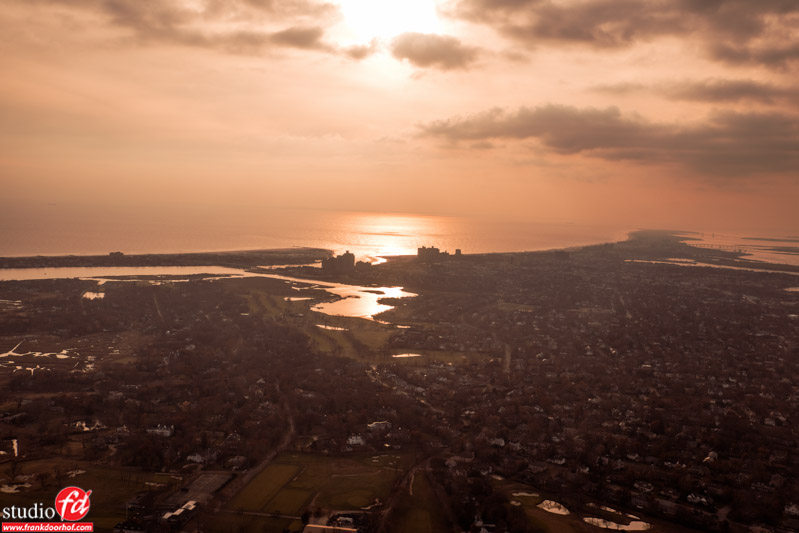
Shooting out of the window from a plane, stewardesses didn’t mind while some people trying it with their phones were asked to shut down all electronics.
Focussing
Oh my, this is something that will probably stick for a while on the FujiFilm cameras, and I have to be honest the first X100 that I used did have some weird focus issues, however as soon as I got my X-pro1 there was no focus issue, as soon as I found out how the OVF (Optical View Finder) worked, you can show two focus points, one that is what you “think” it is, and one that is actually taking into account the fact that you don’t look through the lens but through a separate viewfinder. It sounds weird but trust me when you see it it all makes 100% sense (well ok 98% for the people that never worked with cameras like this). However I used the X-Pro1 most of the time via the EVF (Electronic View Finder) and that one was spot on and accurate.
Recently FujiFilm released a new firmware (2.0) in which they promised a lot more speed in reading and writing to the card and a stunning increase in focus speed, now normally when you get a firmware update (or new camera) that promises something like “twice the speed” I will always divide this by 4 and expect a slight increase, because most of the time they actually mean “in theory it would be possible if everything is perfect and the sun is exactly right and the wind is not below or above…. well you get my drift” however much to my surprise after updating BOTH the body and the lenses (this is as far as I know unique to FujiFilm) the focus speed was indeed at least twice as snappy, wow it felt like a whole new camera.
Now for some people focussing speed is not that important, for landscapes for example it’s nice but not vital, however for street photography the faster the focus is, the better, and in fact it’s never fast enough to be honest. But the X-E1 gives me more than enough speed to be able to say that if I miss a shot it’s probably my own fault.
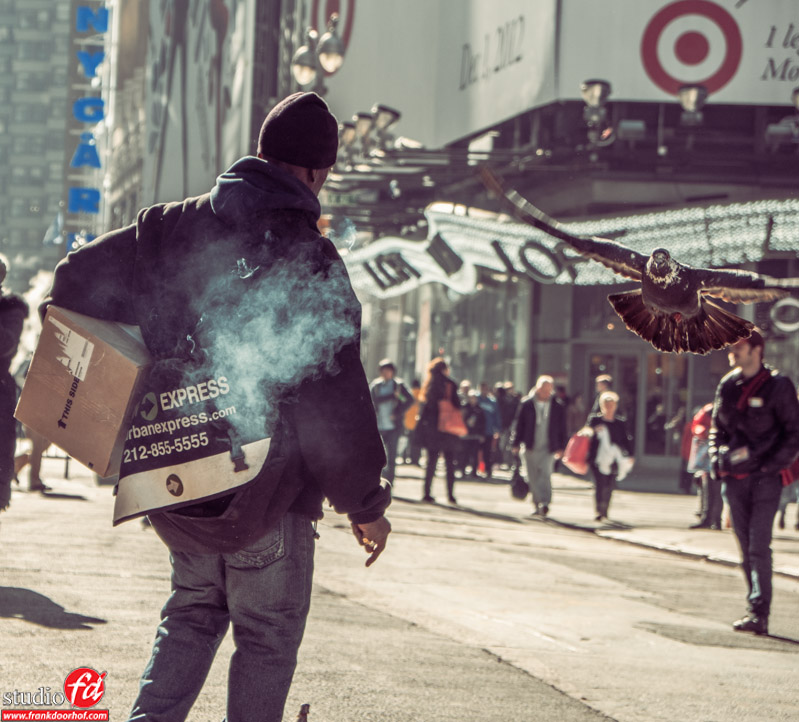
Never say that focussing on the Fujifilm cameras is problematic…. check settings or whatever, see the dove ? That really needed not only fast responses from me, but most of all from the camera.
And both did pretty well 😀
Megapixels
Now some people I talked to are asking me why I would not use my 22-24MP DSLR and instead walk around with “only” 16. Well let’s make one thing clear to start with, the megapixels alone don’t tell the story. Thanks to the sensor design in the FujiFilm cameras you don’t need an AA filter, this filter is used in almost all DSLRs to remove something called Moire, due to the Bayer pattern this can happen when you have fine detail, the AA filter softens the images a bit and you have much less chance of getting moire, however what is softened is actually gone, you can of course resharpen in Photoshop or Lightroom (or your processor of choice) but it’s still a softer image to start with. Now some will disagree and I understand this, I also thought that it was not as bad as you think… however as soon as you see the quality of a medium format camera (without AA) and compare the same megapixels to a DSLR you will very quickly realize that whatever tricks you try to pull you will never ever get that real sharpness back. Now thanks to the design that FujiFilm uses in their sensors the use of an AA filter is not necessary and this means you will get a stunning sharpness and detail in your shots and I know for a fact that even on an A2 print the FujiFilm prints hold better fine detail than most DSLRs. And in the end we have to judge on print, on a monitor we see everything way too big (like looking at a billboard from 20cm distance).
Now why do I walk around with the FujiFilm cameras instead of my DSLR?
Well the answer is really really simple.
Try to imagine walking around with a standard DSLR and your trusty 24-70 lens and one spare lens let’s say the 50mm 1.4.
As you probably know this is quite some gear and you will need at least a small bag, now imagine the same amount of gear but an extra lens and it will all fit in the pockets of your coat or loose sitting trousers and the camera itself is so lightweight that you will not even feel it when carrying it around (I use the blackrapid straps for this). But there is much more.
Think about museums, live concerts or other locations where you are not allowed in with “professional cameras” with the FujiFilm you can often just walk in and take images that are just as good (or even better) than with your DSLR, and that’s the second reason. The dynamic range and the sharpness of the files are of such a quality that I don’t feel like I’m making a compromise while shooting with the X-E1, instead I get more shots because people don’t mind me shooting while when I point a DSLR with a large lens to someone often they will look away or start asking for which magazine I shoot. So it’s a really stealthy camera which is great for street style shooting.

After Sandy NY.
Great dynamic range in the camera gives you an option to capture some stunning images in harsh light.
X-Pro1 or X-E1
Now this question is asked a lot.
So let’s look at this (and this is my opinion).
Image wise they are both 100% the same.
I LOVE the fact that the X-E1 has a pop up flash, and no I will not use a lot but I’ve had some situations where I was really glad that it was on there. By the way I like the way the pop up flash looks and that’s why I always call it “Wall-E” maybe one day they will make an Eve 🙂 the fun thing about this flash is (and it was NOT designed for this, I guess) is that you can aim it up with your finger and use it as bounce flash, and again don’t be mad at me when something goes wrong but it does work.
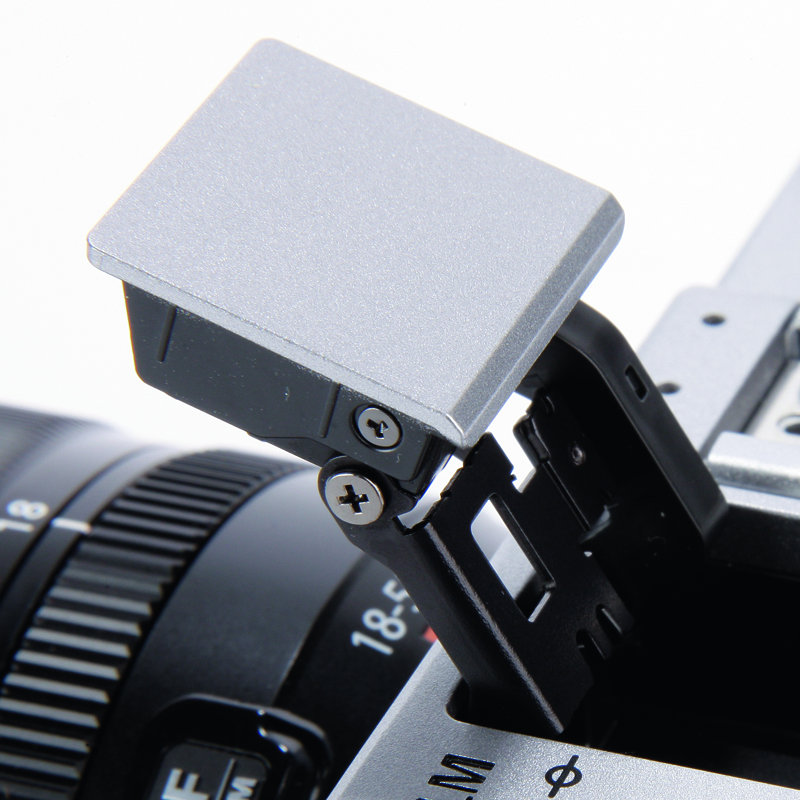
Also the EVF of the X-E1 I like a bit better than the one found in the X-Pro1, the backLCD is better on the X-Pro1 and the X-Pro1’s EVF shows you when you change the exposure compensation, which the X-E1 does not (yet). However I still like the X-E1 more than the X-Pro1 and not only because it’s quite a lot cheaper, but most of all because of the look of the camera, especially when bundled with the vintage looking leathercase and the silver top it’s just gorgeous. Oh and with the leathercase you can still access your battery and memory slot via a smart click system.
High-ISO
Of course High-ISO is often a problem with brands that are not the big names.
But FujiFilm does very very well with their cameras, images up to ISO6400 are perfectly usable and the camera can go even higher as you can see in the specs, however with those settings it’s more a matter of “I at least got the shot”.
.
.
JPG and RAW
I’m a 100% RAW shooter so I shoot RAW with my cameras, however FujiFilm has some amazing looks in their JPG processing. All the popular filmtypes can be found there and your images will get a great look when you use these, now if you don’t know which one to use, no problem… you can always assign the look later, or shoot for example one image and get 3 different looks. The RAW files look great in LightRoom and Photoshop although on SOME images there can be some artifacts that in my opinion are not worth the fuss you see on some forums (but that’s the problem with most forums), yeah there are SOME images that show some loss of detail in LightRoom compared to SilkyPix, but even on a large print this is very very minor, and as you probably already know Adobe is working on it, FujiFilm is giving full cooperation for it, at least you can open up the RAW files and work on them now, if something gets better in the future you can still work on the RAW files, so please don’t shoot JPG only for something that is written on some forums, because in reality the problem is much less than if you believe some posts. During our trip I shot over 500 images with the Fuji and did not see the problem in any of these to an extend that I found the need to go to Silkypix.
.
.
Panorama and double exposures etc.
Like any digital camera also the FujiFilm X-E1 has some tricks up it’s sleeve like a “sweep panorama shot”, double exposure and of course bracketing in both exposure, ISO and picture styles. This is to be honest all nice and fun but I never use it, although I did test the panorama function and thought it was ok, but I would rather let the computer do it with full res images.
.
.
Video
Well it does video and on paper it looks nice.
In reality the video performance is more of a “registration” type of video, it’s not bad, but it’s not as good as the 5DMKIII for example, but it’s more than adequate for capturing that moment when you did not bring your camcorder. And let’s be honest when I’m on a trip I never film with the DSLR, I always bring a Canon consumer camera (HD) the image quality of that camera is always good, it’s focus is aimed at video and the auto functions work flawless, when shooting with a DSLR it’s….. well just way too much work for my normal holiday videos.
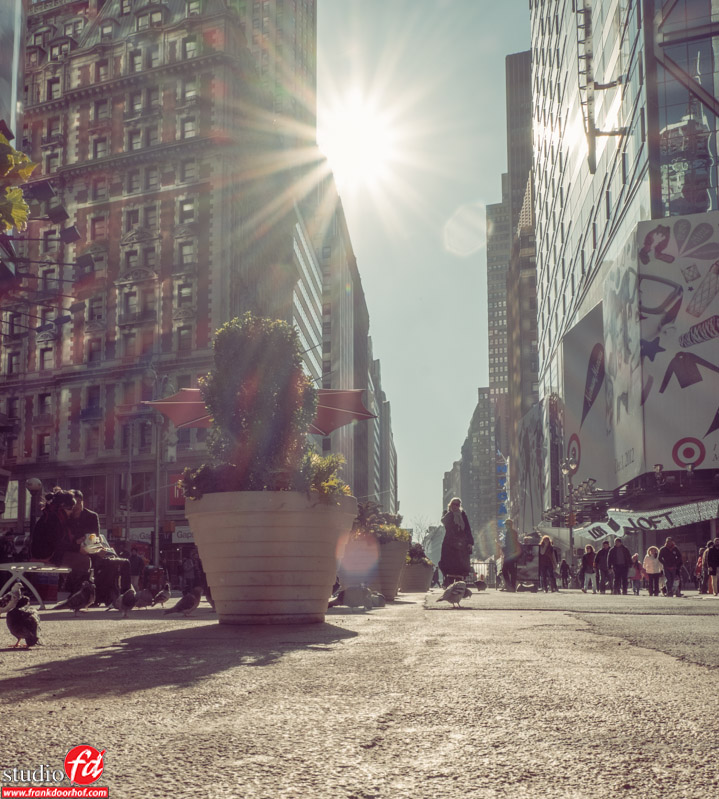
Great dynamic range and a backLCD that has a good viewing angle makes it possible to just let your camera lay on the ground and still think about composition.
Conclusion
What’s not to like about the FujiFilm cameras… well maybe if you like the brick look of some of the competition, or if you really want something big and heavy in your hands. But when I look at the camera, the results, the focusspeed, etc. etc. I just think that the X-E1 is the perfect companion for the travel/street photographer and will really make you think twice about taking your DSLR with you, because to be honest with the new zoom lenses I think there is no need to bring the DSLR on a trip.
.
.
I would buy the Fuji X-E1 in a heartbeat and honestly think that at this time it’s the system that gives you the best performance, best image quality and produces some great glass…. and let’s be honest it’s just incredibly Sexy 😀
.
.
One small added note.
When importing the files in Lightroom make sure you change the crop, somehow they import the files cropped to 16:9 this is easily fixed but you have to pay attention to it.

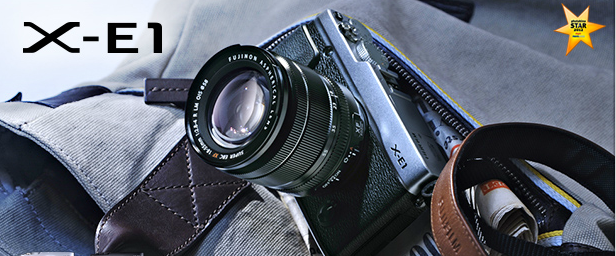
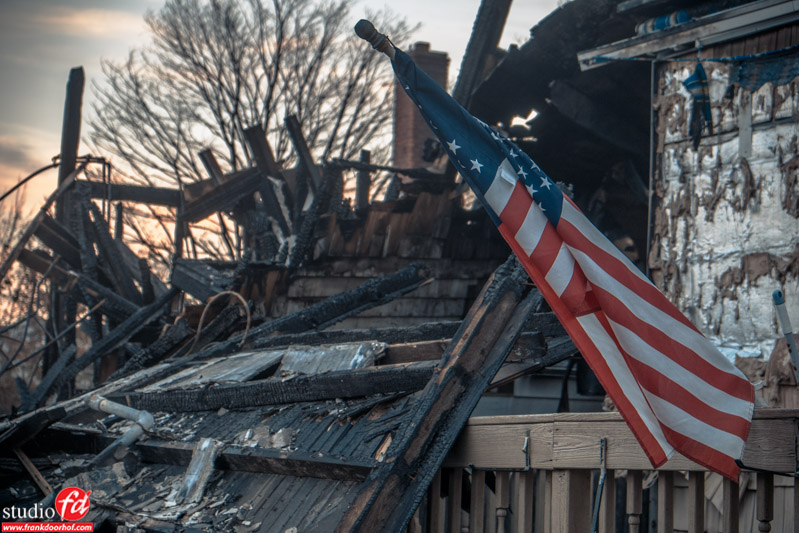
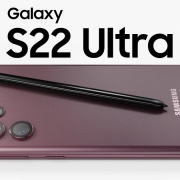
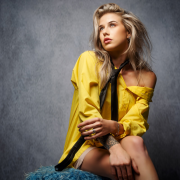
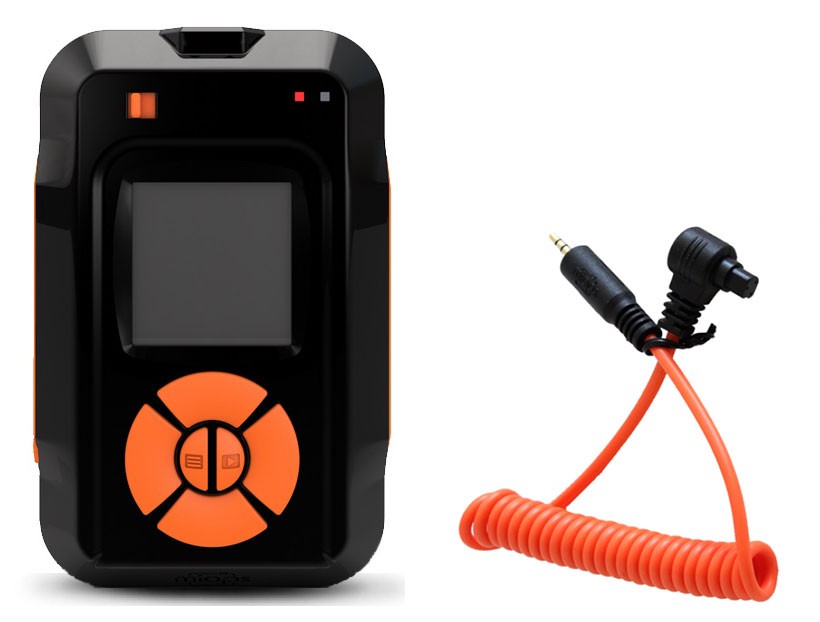
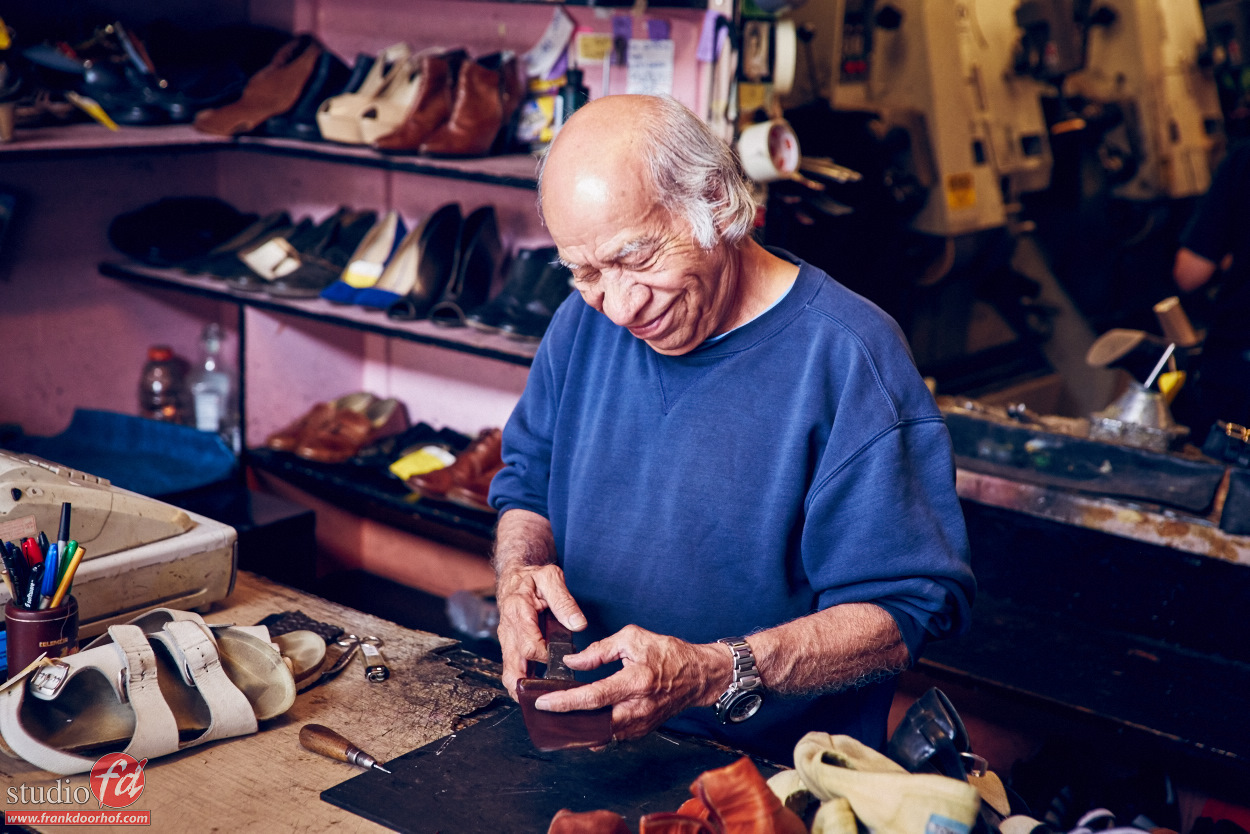

Great review – and if anyone disagrees with your words, your pictures should silence them! I’ve had my X-E1 nearly six weeks and I’m _still_ completely thrilled by it; it takes a special piece of kit to do that for cynical old me nowadays.
A very informative review Frank – thanks!
Great review Frank. I was in London over the weekend (with X100) and got dragged into a department store by my princess (no one else would’ve managed it) however not all was lost…they had a camera department! Made my way over to the Fuji stand with the intention of drooling over the X-pro1 no interest in the X-E1 or X10, worst nightmare then happened the sales robot got me! Oh no not again, I was ready with my “I’m beyond help thanks” or the standard “just looking” get out, however after a quick chat explaining that clients expect a big DSLR and that I couldn’t justify the X-pro1 for personal use she proceeded to hand me the X-E1, first surprise was the EVF excellent I wasn’t aware it had one! Next as I spanned the store swapping focus points the speed of auto focus really impressed added to the feel, control layout, already impressed with the files from the X100, I wanted one! Sad to say common sense prevailed, money supply isn’t what it was as for so many people, however it’s on the wish list for sometime in the near future. Something else I noticed was that the evf has diopter adjustment which I understand the X-pro1 doesn’t. Good advice for anyone in the market for this type of camera…go and check the X-E1 out or you’ll kick yourself later.
Nice review, and yes it is “deadly” to hold and test one, it’s a camera you fall in love with VERY easily.
Frank,
Thanks for the great review. FYI only, X-E1 EVF does show you when you change the exposure compensation in the Custom information display mode, I use it all the time.
Mark
Will check that tomorrow. I know the X-Pro1 does and the A99 of course, but on the X-E1 I only saw it working after repressing the shutter button so it was not while looking through the viewfinder with the shutter half pressed like with the Sony and X-pro1.
But I will check tomorrow.
Great review. I’ve just taken delivery of the same set up….silver body and the 18-55 lens. With the retro leather cover. I have to wait a few days to use as it is my wife’s birthday present for me. I’ve gotten the gear for précisely the same reason as you. The weight of carrying Canon d60, L lens etc. I did briefly look at the EVF and was really impressed. I’m a 60 year old male that uses reading glasses, and the diopter adjustment works incredibly well. I did notice that the 18-55 lens has now removed the F stop labelled ring. Which I guess is fine, but will take some getting used to.
If I did have a wish…and a minor one…..I’d love the retro cover to have a top piece that would cover the lens. Even if it was just the 35mm lens size. Just the additional protection for when travelling this year from Australia to Italy on vacation, which is a large chunk of the reason for me buying the XE1
Congrats you’re gonna love it 😀
With the Fstop on the lens I agree and disagree, it’s a double edged sword (hope that’s the right expression), it saves you from accidentally changing the aperture while the camera is off, but I agree that I love to see what I’m doing ON the lens instead of in the display.
I have to admit I got used to it within a few days so for now it’s ok for me.
Mike, there are no markings on the aperture ring, because the lens has a variable aperture from f/2.8 to f/4. Putting markings on the ring is not possible, unless the ring somehow switches to the right aperture setting mechanically. I think the Fuji solution is elegant and functional. The aperture ring on the prime lenses of course do have markings.
Awesome review. I have the X-E1 coming tomorrow and I can’t wait to use it. I’ve read tons of stuff about the raw files. Glad you didn’t find it to be a major problem. I may use DNG or just shoot jpegs. Maybe raw+jpeg. Anyway, thanks for the info!
I would just shoot RAW to be honest.
Thanks for the review Frank, I’m looking into buying one this weekend.
You will love it.
Hi Frank! The sample photos of yours look a little bluish? And in your portfolio which one you took with Fuji X-E1?
i LIKE YOUR REVIEW!
Correct, I always tint my images slightly.
In the review you see all the images with the Fuji, in the portfolio the travel material is mostly Canon and Fuji
Thank you! Have you ever Leica M9?
Very interesting review with some very useful practical pointers. I’ve been lusting after the X-E1 since it came out and finally persuaded myself that I needed it as a birthday present to myself. It’s a lovely device – although I decided the all-black was much nicer looking than the silver (and I’d gone into the shop determined on the latter!). The silver version just looks a bit “tinny” side by side with the all-black and looks a trifle larger too! The location of the control wheels and their functions is absolutely right and the variety of shot you can take on the jpg variants is quite amazing. I’m now looking forward to mount adaptors for Canon that will allow me to use my 100mm prime macro lens and 10-20mm wide angle. Those that exist at present don’t seem to do a particularly good job, so I’ll be checking your blog regularly to find out what you come across! Thanks again for the review.
You’re welcome and congrats on the camera 😀
I personally still prefer the silver one, I’ve been shooting with the black one and waiting for a silver version, I just love the more retro look I guess 😀
Wow. Thanks so much. One of the best camera reviews I have read in some time. The last camera that got me this excited was the Lumix LX3. I have arthritis in my left hand, which limits my use of my DSLRs and larger lenses. I ventured into the world of higher end point na shoots about two three years ago. I was tempted to purchase the X100, but decided to wait. My focus (excuse the pun) is landscapes and my precious granddaughter. When I do shoot sports, it is normally football….love the action and have made some great enlargement for my son and his friends…have decorated many Man Caves. At any rate, the X-E1 is not only beautiful/it remids me of the first Minolta my parents gave me in 1968. I am impressed with the features of the X-E1. I am one who appreciates the retro look. The one issue I have with many of the cameras is why the movie function ? I never use it. My own quirk. I am off today to purchase the X-E1. Thank you again for a fine review. Getting the Silver one!
Thanks, I also love the silver one 😀
Movie mode I never use myself except on the Sony A99 when I really need to, we have a Sony and Canon camera for that with insane IS and great image quality, follow focus etc. so why use a DSLR or other camera 😀
Mary, thanks for sharing, I have been using Lumix LX7 and was so happy about it. But I would love to shoot at bigger sensor level.. yes, I have no experiences or previous training about photos, I just love to take photos… and I reached this site because of G+ keywords.. I love the retro look and I am hoping to secure one soon.. I too will not be using movie function and won’t mind about having no dedicated button.
Two Days In:
So beautiful. This is not a toy camera! I am getting through the instructions/clearly I do not need to know everything just yet, and will probaply not access every feature. But the most impressive thing about the camera is how fun working in manual is. I love it. No pont and shoot!
Good to hear, and I still love the X-E1 myself 😀
can i use it to make a commercial movie????
If you can do it with an iPhone….
Why not.
And no it’s not a 4K red.
Thank you, Frank for a comprehensive review. I just got the X-E1 several days ago. It is very (I mean, VERY) different than the Nikon D600 that I have used for the past several months. Before the D600, I have been using the Olympus 4/3 for many years. I must say, after using the X-E1 for several days, I do not want to put it down. In addition to the impressive image quality, the X-E1 has such a nice feel. This may just be psychological because of its retro look, or something else. I am sure that the D600 can take better photos under most circumstances. But it is much heavier and cost much more. My wrist sure appreciates the compactness of the X-E1 after using it for half a day.
It is a special camera.
Hi Frank, I totally agree with you’re review. I have never made as many images as i do with this nifty little camera. It brings back the fun factor. I also use it for street-style work but i am starting to use for everything else to with the exception of model and macro. I love to be able to just use the three big ones and ignore the rest. Just simple Aperture, shutter and ISO an loads of fun.
Yep, it’s the fun factor, but also the image quality.
At the moment I’m testing the A7r and that’s also one to check out.
Hi frank. Just a quick question. Would you still recommend the x-e1?
I love your review of it and the camera won’t change even though it’s a year older.
Just interested in your opinion.
Thanks
Phil